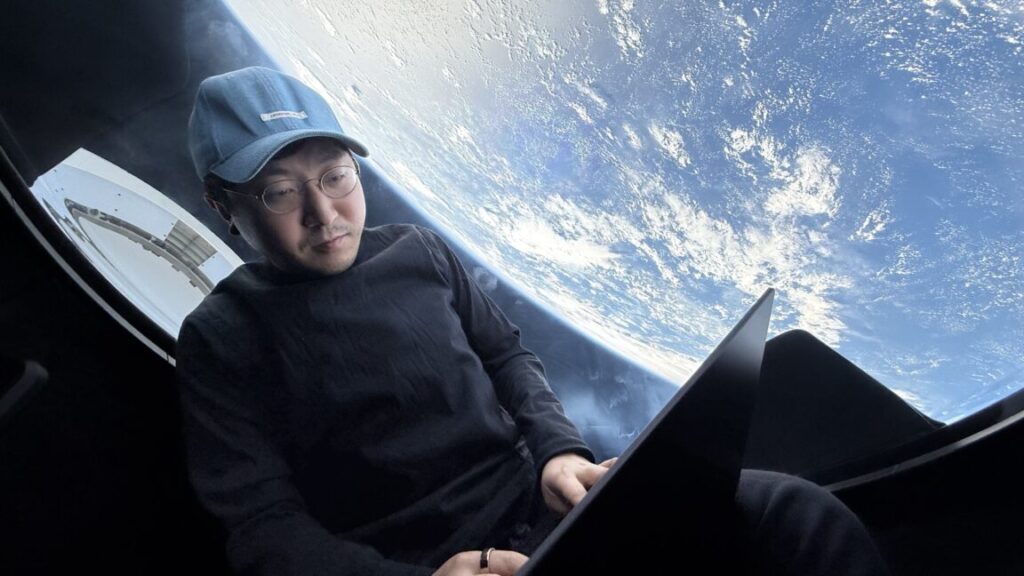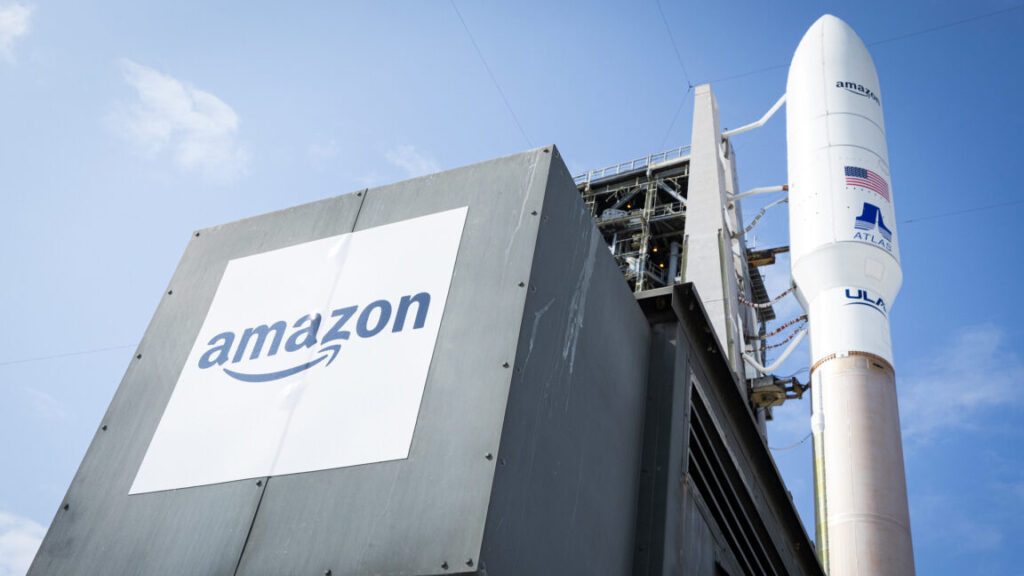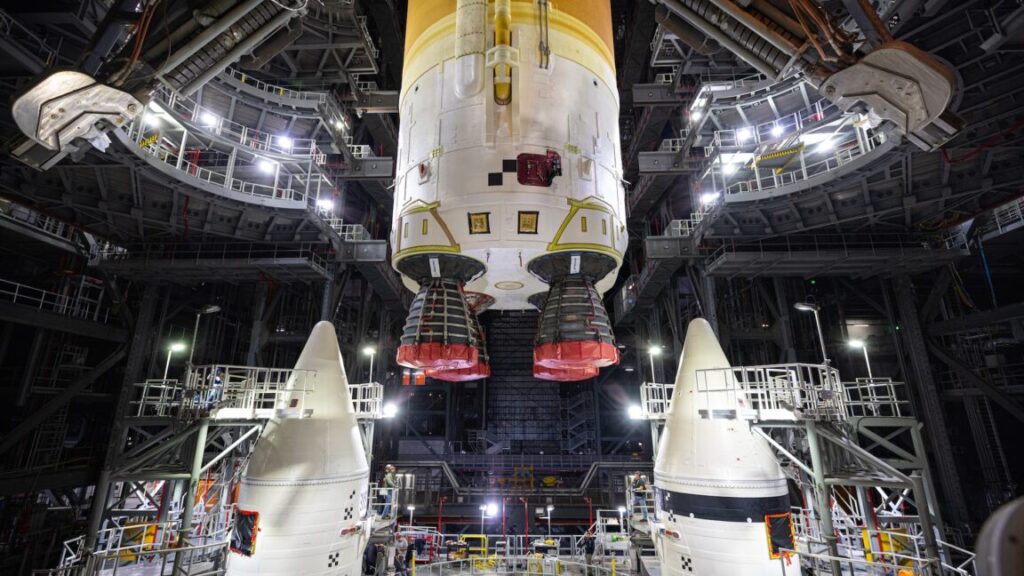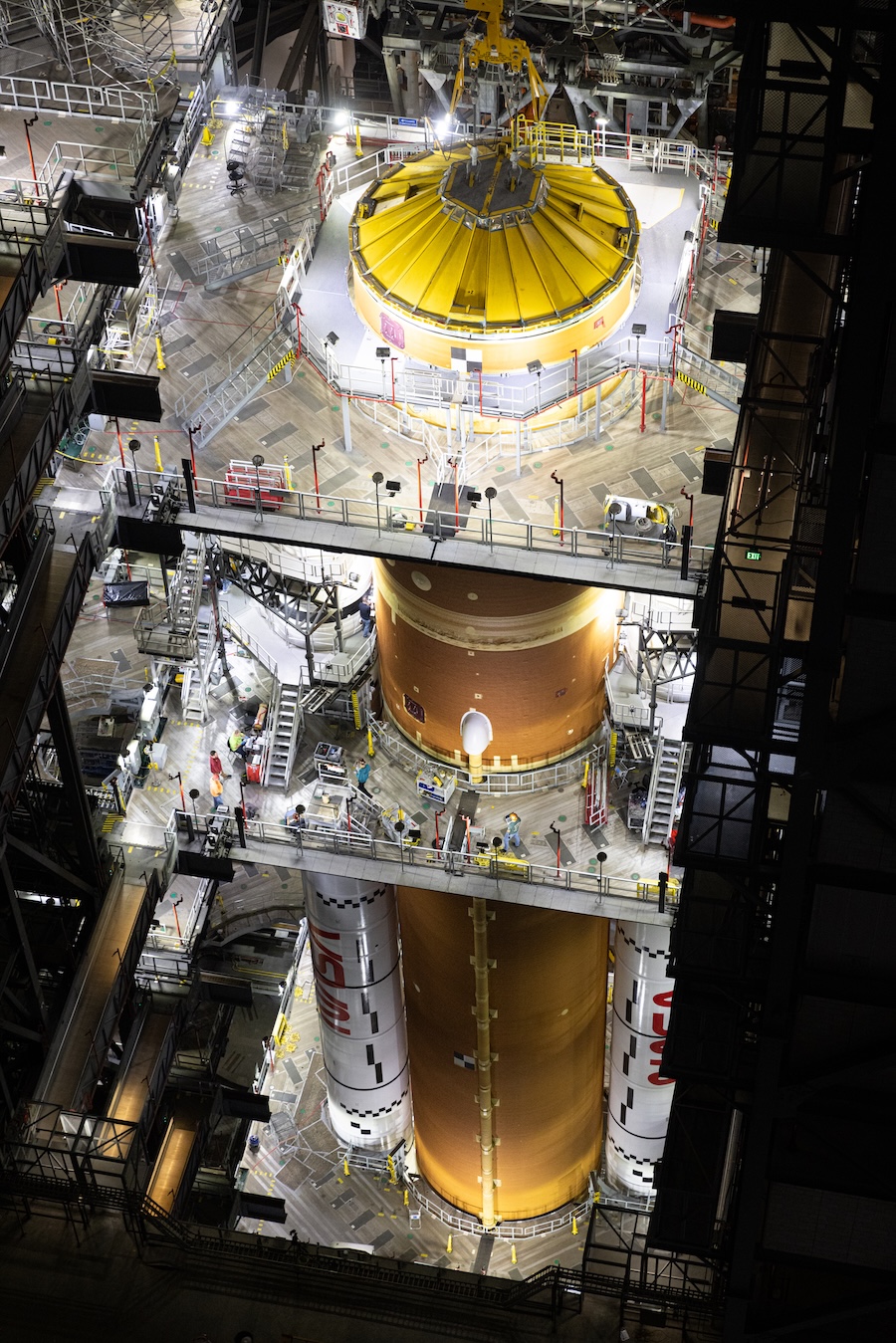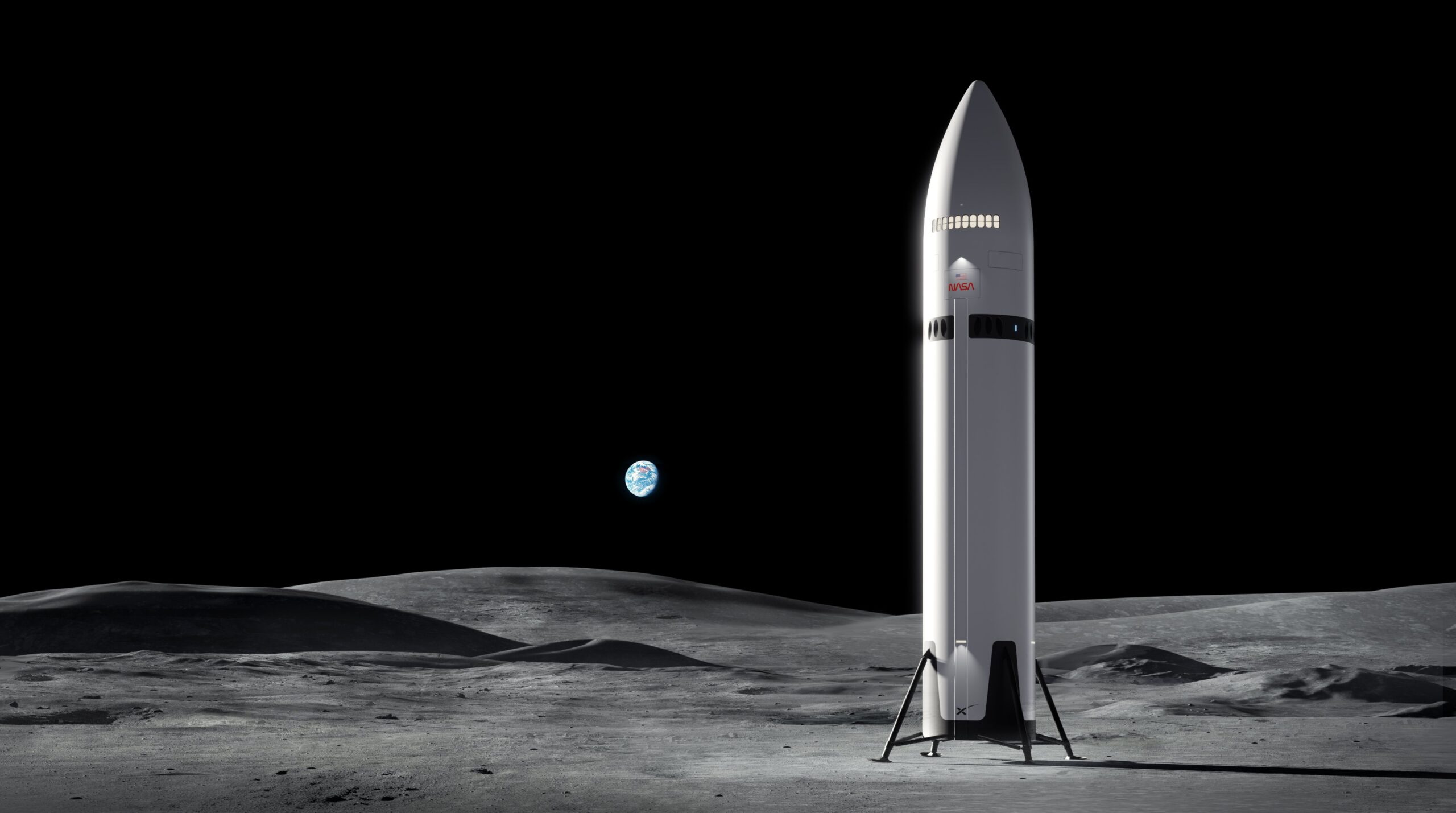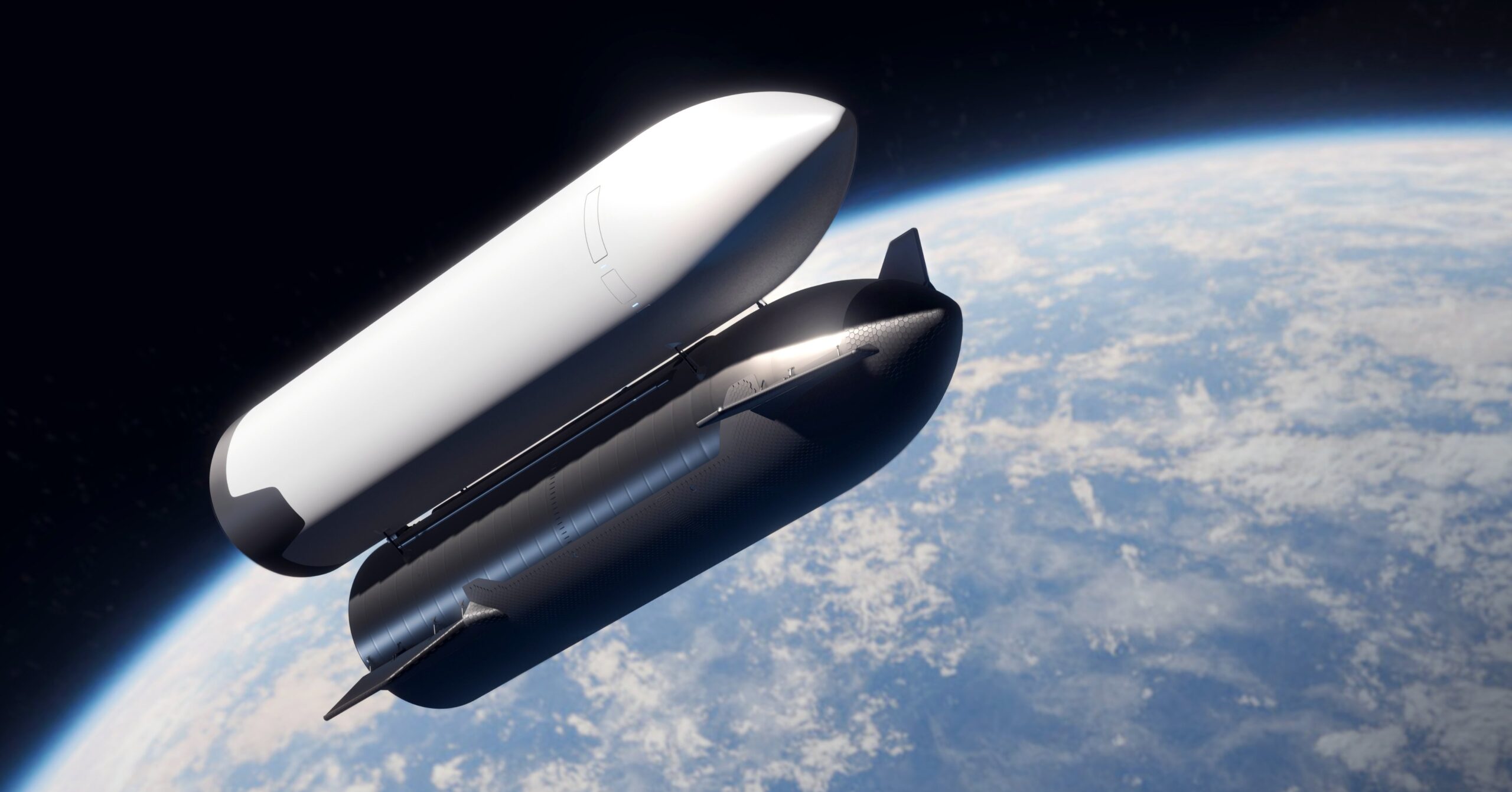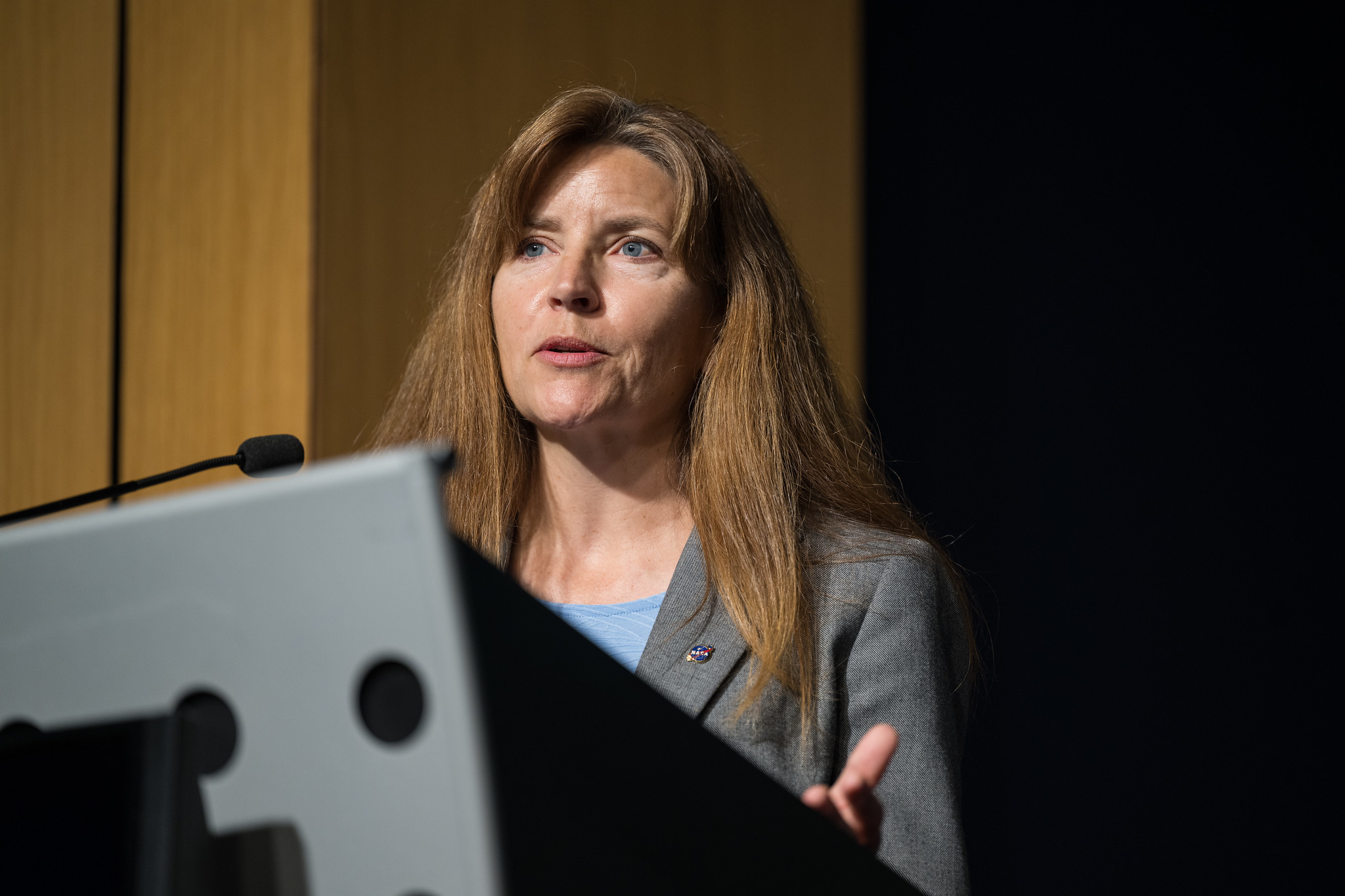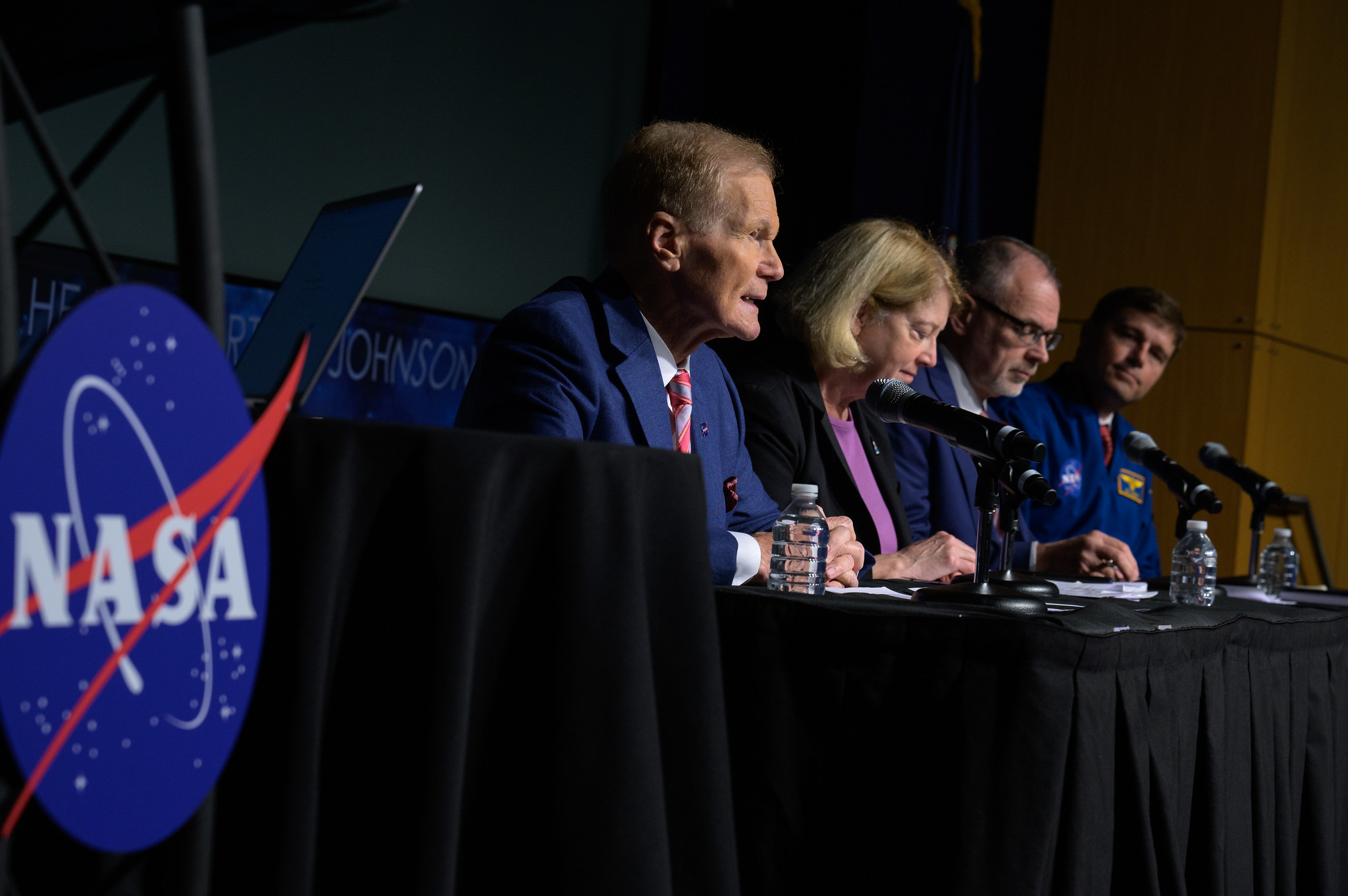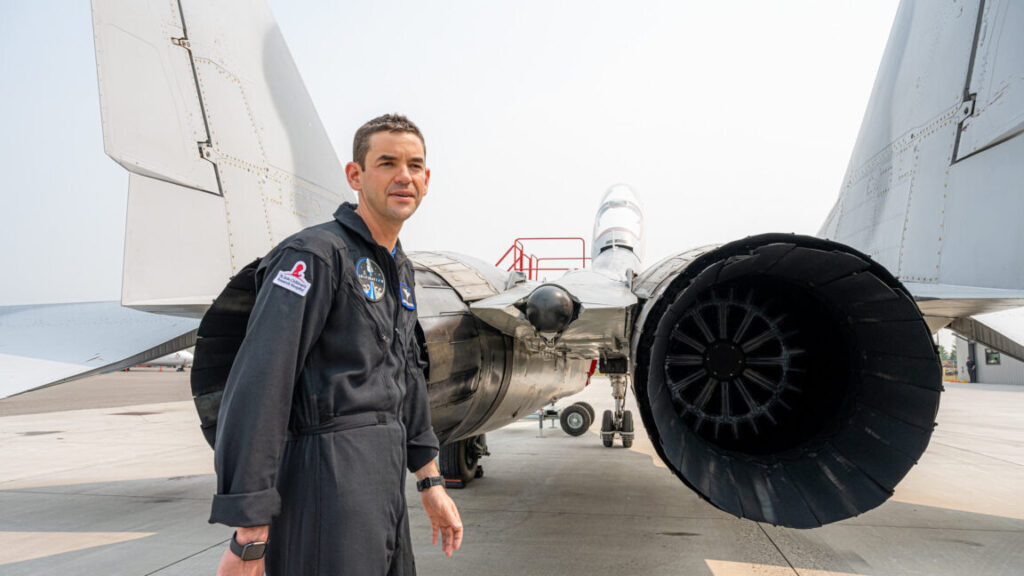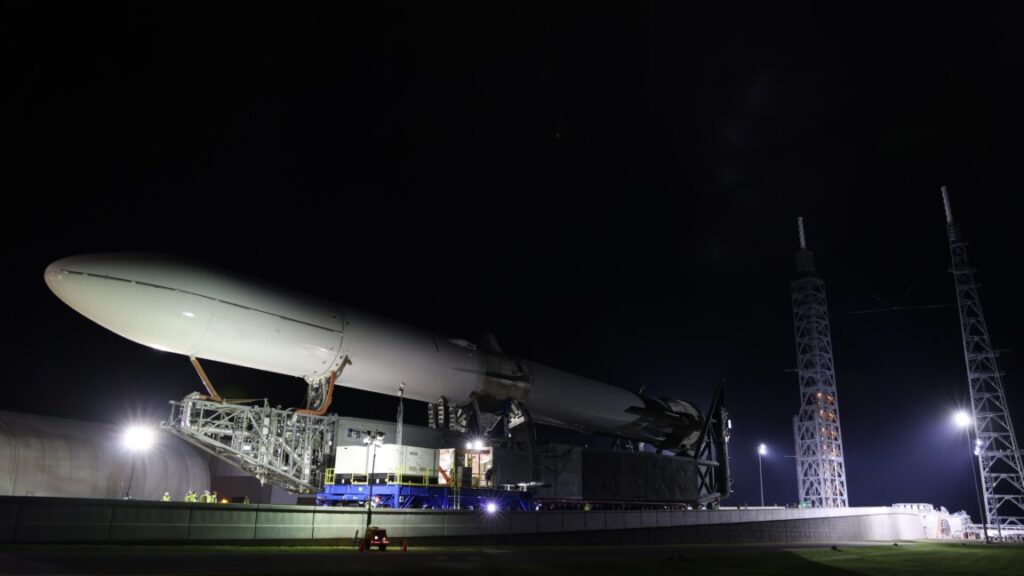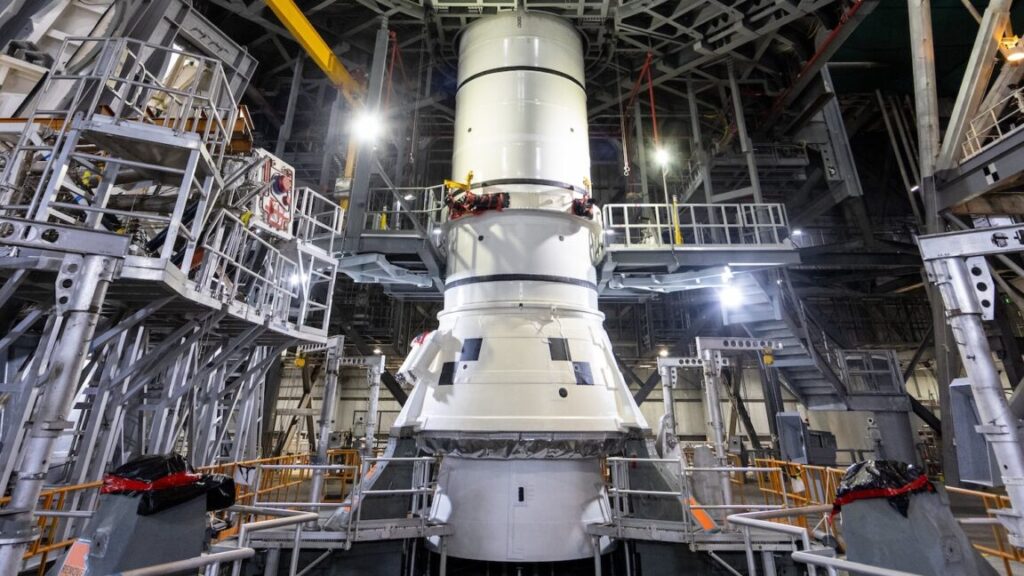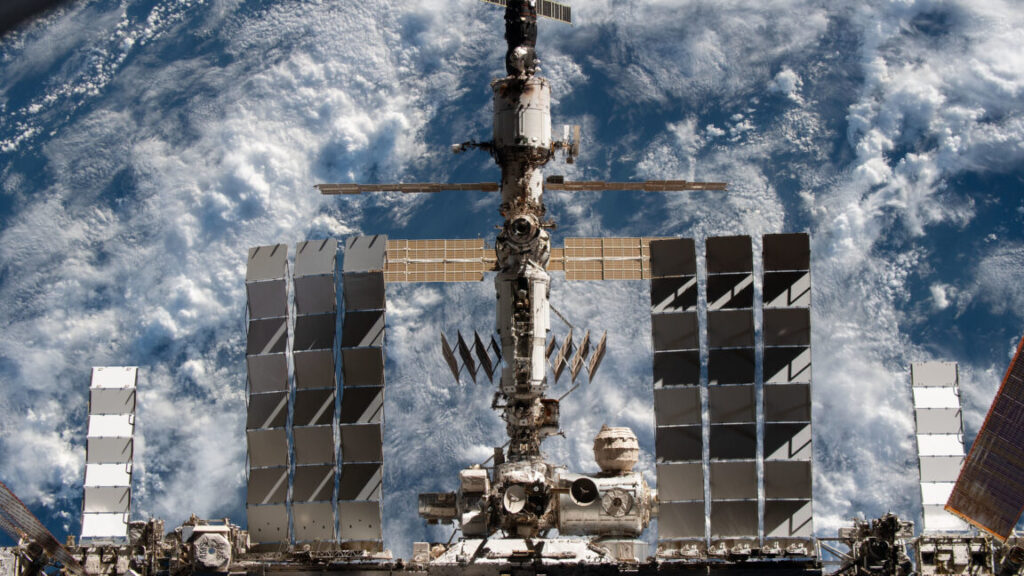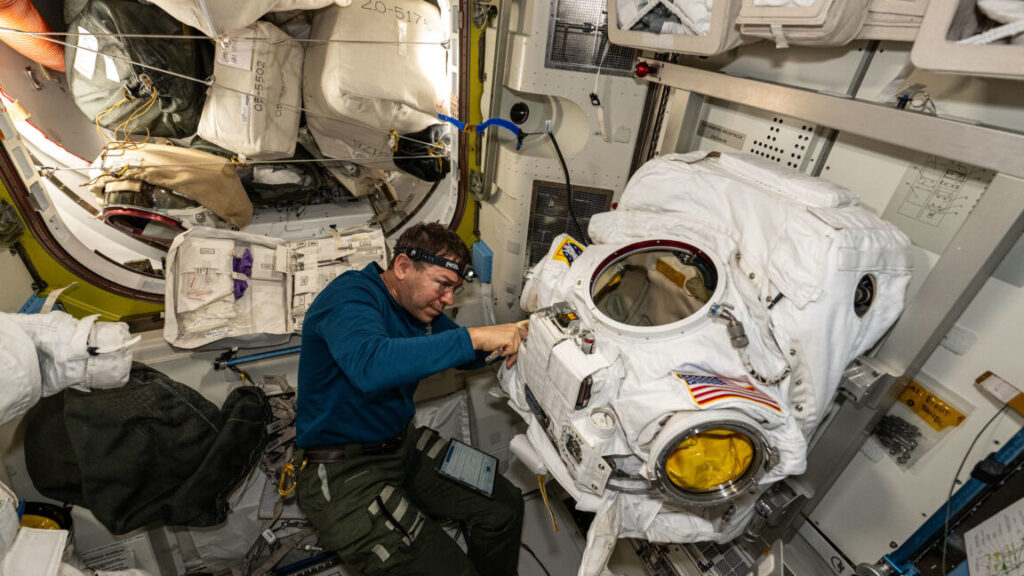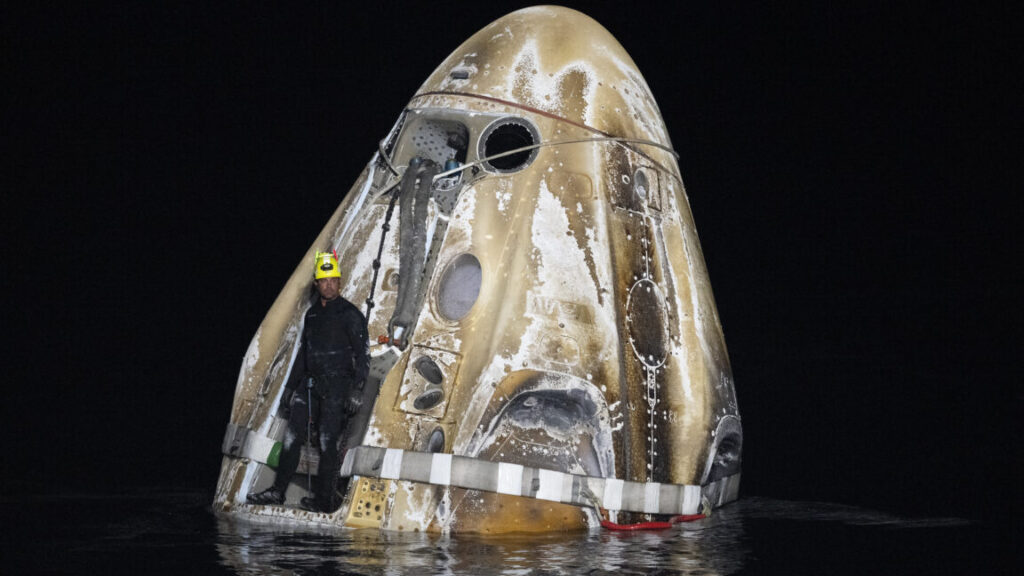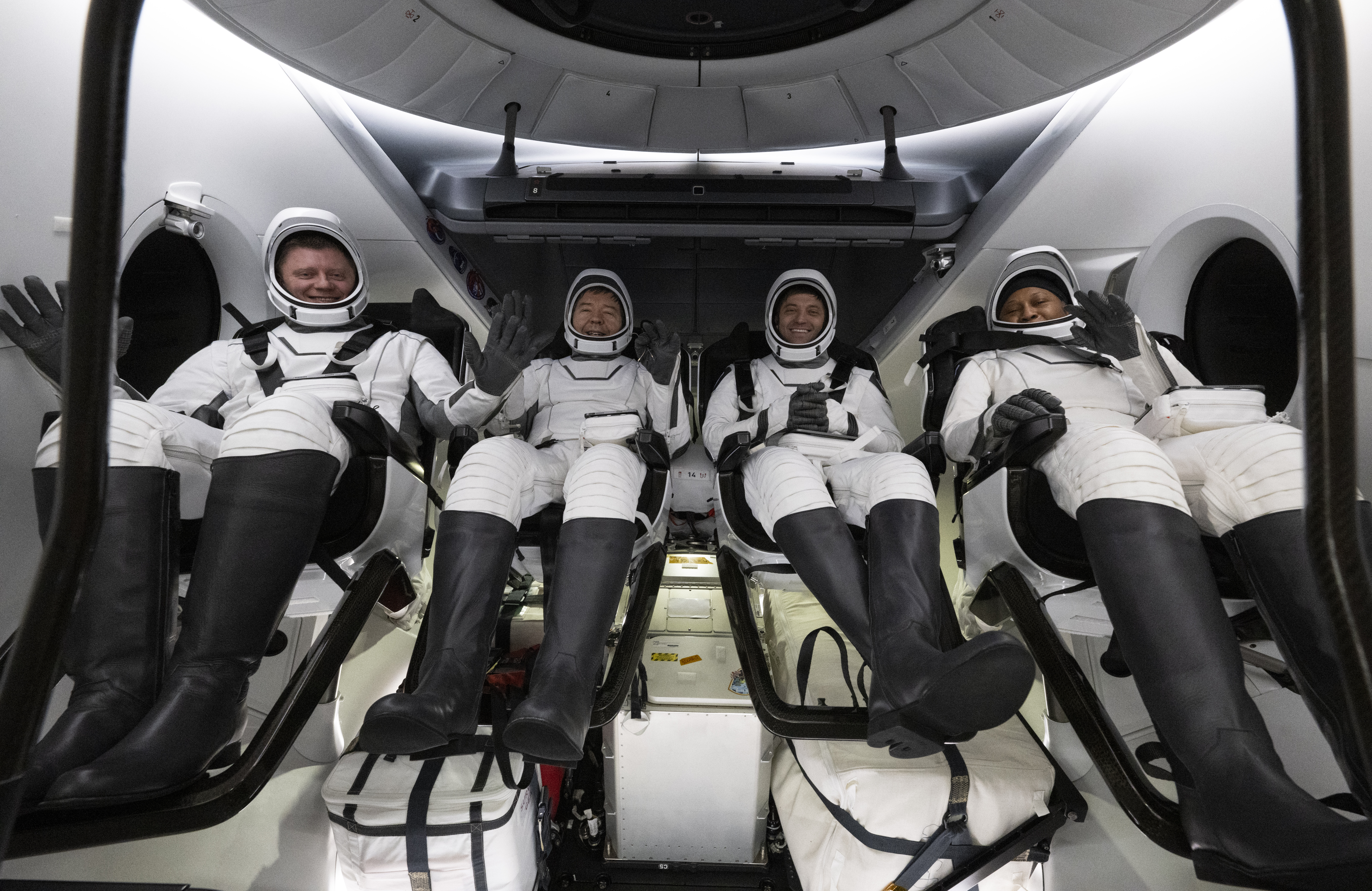Rocket Report: The pitfalls of rideshare; China launches next Tiangong crew
This week, engineers ground-tested upgrades for Blue Origin’s New Glenn and Europe’s Ariane 6.
A Long March 2F carrier rocket, carrying the Shenzhou 20 spacecraft and a crew of three astronauts, lifts off from the Jiuquan Satellite Launch Center in northwest China on April 24, 2025. Credit: Photo by Pedro Pardo/AFP via Getty Images
Welcome to Edition 7.41 of the Rocket Report! NASA and its contractors at Kennedy Space Center in Florida continue building a new mobile launch tower for the Space Launch System Block 1B rocket, a taller, upgraded version of the SLS rocket being used for the agency’s initial Artemis lunar missions. Workers stacked another segment of the tower a couple of weeks ago, and the structure is inching closer to its full height of 355 feet (108 meters). But this is just the start. Once the tower is fully assembled, it must be outfitted with miles of cabling, tubing, and piping and then be tested before it can support an SLS launch campaign. Last year, NASA’s inspector general projected the tower won’t be ready for a launch until the spring of 2029, and its costs could reach $2.7 billion. The good news, if you can call it that, is that there probably won’t be an SLS Block 1B rocket that needs to use it in 2029, whether it’s due to delays or cancellation.
As always, we welcome reader submissions. If you don’t want to miss an issue, please subscribe using the box below (the form will not appear on AMP-enabled versions of the site). Each report will include information on small-, medium-, and heavy-lift rockets, as well as a quick look ahead at the next three launches on the calendar.

Fresh details on Astra’s strategic pivot. Astra, the once high-flying rocket startup that crashed back to Earth with investors before going private last year, has unveiled new details about its $44 million contract with the Department of Defense, Space News reports. The DOD contract announced last year supports the development of Rocket 4, a two-stage, mobile launch vehicle with ambitions to deliver cargo across the globe in under an hour. While Astra’s ill-fated Rocket 3 focused on launching small satellites into low-Earth orbit, Astra wants to make Rocket 4 a military utility vehicle. Rocket 4 will still be able to loft conventional satellites, but Astra’s most lucrative contract for the new launch vehicle involves using the rocket for precise point-to-point delivery of up to 1,300 pounds (590 kilograms) of supplies from orbit via specialized reentry vehicles. The military has shown interest in developing a rocket-based rapid global cargo delivery system for several years, and it has a contract with SpaceX to study how the much larger Starship rocket could do a similar job.
Back from the brink… The Alameda, California-based company, which was delisted from Nasdaq in June 2024 after its shares collapsed, is now targeting the first test flight of Rocket 4 in 2026. Astra’s arrangement with the Defense Innovation Unit includes two milestones: one suborbital (point-to-point) and the other orbital, with the option to launch from a location outside the United States, as Astra is developing a mobile launcher. Chris Kemp, Astra’s co-founder and CEO, told Space News the orbital launch will likely originate from Australia. Astra’s first launches with the new-retired Rocket 3 vehicle were based in Alaska and Florida.
The easiest way to keep up with Eric Berger’s and Stephen Clark’s reporting on all things space is to sign up for our newsletter. We’ll collect their stories and deliver them straight to your inbox.
The Army has a catchy name for its newest weapon. The Long Range Hypersonic Weapon has a new name: Dark Eagle. The US Army announced the popular name for the service’s quick strike missile this week. “Part of the name pays tribute to the eagle—a master hunter known for its speed, stealth and agility—due to the LRHW’s combination of velocity, accuracy, maneuverability, survivability and versatility,” the Army said in a press release. “In addition, the bald eagle—our national bird—represents independence, strength, and freedom.” The Dark Eagle is designed to strike targets with little or no warning via a hypersonic glide vehicle capable of maneuvering in the upper atmosphere after an initial launch with a conventional missile. The hypersonic weapon’s ability to overcome an adversary’s air and missile defenses is embodied in the word “dark” in Dark Eagle, the Army said.
Flying again soon… The Army tested the hypersonic weapon’s “all-up round” during a missile launch from Cape Canaveral, Florida, in December. The test was delayed more than a year due to unspecified issues. The Army appears to be preparing for another Dark Eagle test from Florida’s Space Coast as soon as Friday, according to airspace and maritime warning notices in the Atlantic Ocean. (submitted by EllPeaTea)
Northrop’s niche with Minotaur. Ars mentioned in last week’s Rocket Report that Northrop Grumman’s Minotaur IV rocket launched April 16 with a classified payload for the National Reconnaissance Office. This was the first Minotaur IV launch in nearly five years and the first orbital Minotaur launch from Vandenberg Space Force Base, California, in 14 years. The low-volume Minotaur IV uses solid rocket motors from the Air Force’s stockpile of retired Peacekeeper ballistic missiles, turning part of a weapon of mass destruction into, in this case, a tool to support the US government’s spy satellite agency. The Minotaur IV’s lift capability fits neatly between the capacity of smaller commercial rockets, like Firefly’s Alpha or Rocket Lab’s Electron, and larger rockets like SpaceX’s Falcon 9. The most recent Minotaur IV launch contract cost the Space Force roughly $30 million, more than a mission with Firefly but less than a dedicated ride on a Falcon 9.
Minotaur IV will keep flying… The Space Force has at least two more missions reserved to launch on the expendable Minotaur IV rocket. One of the missions will launch multiple small satellites for the US military’s Space Test Program, and the other will place a military weather satellite into orbit. Both missions will launch from California, with planning launch dates in 2026, a Space Systems Command spokesperson told Ars. “We do have multiple launches planned using Minotaur family launch vehicles between our OSP-4 (Orbital/Suborbital Program) and SRP-4 (Sounding Rocket Program) contracts,” the spokesperson said. “We will release more information on those missions as we get closer to launch.” The Commercial Space Act of 1998 prohibits the use of surplus ICBM motors for commercial launches and limits their use to only specific kinds of military launches. The restrictions were intended to encourage NASA and commercial satellite operators to use privately developed launch vehicles.

NASA’s launch prices have somehow gone up. In an era of reusable rockets and near-daily access to space, NASA is still paying more than it did 30 years ago to launch missions into orbit, according to a study soon to be published in the scientific journal Acta Astronautica. Adjusted for inflation, the prices NASA pays for launch services rose at an annual average rate of 2.82 percent from 1996 to 2024, the report says. “Furthermore, there is no evidence of shift in the launch service costs trend after the introduction of a new launch service provider [SpaceX] in 2016.” Ars analyzed NASA’s launch prices in a story published Thursday.
Why is this? … One might think SpaceX’s reuse of Falcon 9 rocket components would drive down launch prices, but no. Rocket reuse and economies of scale have significantly reduced SpaceX’s launch costs, but the company is charging NASA roughly the same as it did before booster reuse became commonplace. There are a few reasons this is happening. One is that SpaceX hasn’t faced any meaningful competition for NASA launch contracts in the last six years. That should change soon with the recent debuts of United Launch Alliance’s Vulcan rocket and Blue Origin’s New Glenn launcher. NASA levies additional requirements on its commercial launch providers, and the agency must pay for them. These include schedule priority, engineering oversight, and sometimes special payload cleanliness requirements and the choice of a particular Falcon 9 booster from SpaceX’s inventory.
What’s holding up ULA’s next launch? After poor weather forced ULA to scrub a launch attempt on April 9, the company will have to wait nearly three weeks for another try to launch an Atlas V rocket with Amazon’s first full-up load of 27 Kuiper broadband satellites, Ars reports. The rocket and satellites are healthy, according to ULA. But the military-run Eastern Range at Cape Canaveral Space Force Station, Florida, is unable to accommodate ULA until Monday, April 28. The Space Force is being unusually cagey about the reasons for the lengthy delay, which isn’t affecting SpaceX launches to the same degree.
Finally, a theory… The publishing of airspace and maritime warning notices for an apparent test launch of the Army’s Long Range Hypersonic Weapon, or Dark Eagle, might explain the range’s unavailability. The test launch could happen as soon as Friday, and offshore keep-out zones cover wide swaths of the Atlantic Ocean. If this is the reason for the long Atlas V launch delay, we still have questions. If this launch is scheduled for Friday, why has it kept ULA from launching the last few weeks? Why was SpaceX permitted to launch multiple times in the same time period? And why didn’t the first test flight of the Dark Eagle missile in December result in similar lengthy launch delays on the Eastern Range?
Shenzhou 20 bound for Tiangong. A spaceship carrying three astronauts docked Thursday with China’s space station in the latest crew rotation, approximately six hours after their launch on a Long March 2F rocket from the Gobi Desert, the Associated Press reports. The Shenzhou 20 mission is commanded by Chen Dong, who is making his third flight. He is accompanied by fighter pilot Chen Zhongrui and engineer Wang Jie, both making their maiden voyages. They will replace three astronauts currently on the Chinese Tiangong space station. Like those before them, they will stay on board for roughly six months.
Finding a rhythm… China’s human spaceflight missions have launched like clockwork since the country’s first domestic astronaut launch in 2003. Now, with the Tiangong space station fully operational, China is launching fresh crews at six-month intervals. While in space, the astronauts will conduct experiments in medical science and new technologies and perform spacewalks to carry out maintenance and install new equipment. Their tasks will include adding space debris shielding to the exterior of the Tiangong station. (submitted by EllPeaTea)
SpaceX resupplies the ISS. SpaceX launched an uncrewed Cargo Dragon spacecraft to the International Space Station early Monday on a resupply mission with increased importance after a transportation mishap derailed a flight by another US cargo ship, Spaceflight Now reports. The Dragon cargo vessel docked at the space station early Tuesday with 4,780 pounds (2,168 kilograms) of pressurized cargo and 1,653 pounds (750 kilograms) of unpressurized payloads in the vehicle’s trunk. NASA adjusted the Dragon spacecraft’s payload because an upcoming flight by Northrop Grumman’s Cygnus supply freighter was canceled after the Cygnus cargo module was damaged during transport to the launch site.
Something strange… The payloads aboard this Dragon cargo mission—the 32nd by SpaceX—include normal things like fresh food (exactly 1,262 tortillas), biomedical and pharmaceutical experiments, and the technical demonstration of a new atomic clock. However, there’s something onboard nobody at NASA or SpaceX wants to talk about. A payload package named STP-H10 inside Dragon’s trunk section will be installed on a mounting post outside of the space station to perform a mission for the US military’s Space Test Program. STP-H10 wasn’t mentioned in NASA’s press kit for this mission, and SpaceX didn’t show the usual views of Dragon’s trunk when the spacecraft deployed from its Falcon 9 rocket shortly after launch. These kinds of Space Test Program experiment platforms have launched to the ISS before without any secrecy. Stranger still is the fact that the STP-H10 experiments are unclassified. You can see the list here. (submitted by EllPeaTea)
There are some drawbacks to rideshare. SpaceX launched its third “Bandwagon” rideshare mission into a mid-inclination orbit Monday evening from Cape Canaveral Space Force Station, Space News reports. The payloads included a South Korean military radar spy satellite, a small commercial weather satellite, and the most interesting payload: an experimental reentry vehicle from a German startup named Atmos Space Cargo. The startup’s Phoenix vehicle, fitted with an inflatable heat shield, separated from the Falcon 9’s upper stage about 90 minutes after liftoff. Roughly a half-hour later, it began reentry for a splashdown in the South Atlantic Ocean, about 1,200 miles (2,000 kilometers) off the coast of Brazil. Until last month, the Phoenix vehicle was supposed to reenter over the Indian Ocean east of Madagascar, near the island of Réunion. The late change to the mission’s trajectory meant Atmos could not recover the spacecraft after splashdown.
Changes in longitude… Five weeks before the launch, SpaceX informed Atmos of a change in trajectory because of “operational constraints” of the primary payload, a South Korean reconnaissance satellite. Smaller payloads on rideshare launches benefit from lower launch prices, but their owners have no control over the schedule or trajectory of the launch. The change for this mission resulted in a splashdown well off the coast of Brazil, ruling out any attempt to recover Phoenix after splashdown. It also meant a steeper reentry than previously planned, creating higher loads on the spacecraft. The company lined up new ground stations in South America to communicate with the spacecraft during key phases of flight leading up to reentry. In addition, it chartered a plane to attempt to collect data during reentry, but the splashdown location was beyond the range of the aircraft. Some data suggests that the heat shield inflated as planned, but Atmos’s CEO said the company needed more time to analyze the data it had, adding that it was “very difficult” to get data from Phoenix in the final phases of its flight, given its distance from ground stations.
Ariane 6 is gonna need a bigger booster. A qualification motor for an upgraded solid rocket booster for Europe’s Ariane 6 rocket successfully fired up for the first time on a test stand Thursday in Kourou, French Guiana, according to the European Space Agency. The new P160C solid rocket motor burned for more than two minutes, and ESA declared the test-firing a success. ESA’s member states approved the development of the P160C motor in 2022. The upgraded motor is about 3 feet (1 meter) longer than the P120C motor currently flying on the Ariane 6 rocket and carries about 31,000 pounds (14 metric tons) more solid propellant. The Ariane 6 rocket can fly with two or four of these strap-on boosters. Officials plan to introduce the P160C on Ariane 6 flights next year, giving the rocket’s heaviest version the ability to haul up to 4,400 pounds (2 metric tons) of additional cargo mass to orbit.
A necessary change… The heavier P160C solid rocket motor is required for Arianespace to fulfill its multi-mission launch contract with Amazon’s Project Kuiper satellite broadband network. Alongside similar contracts with ULA and Blue Origin, Amazon reserved 18 Kuiper launches on Ariane 6 rockets, and 16 of them must use the upgraded P160C booster to deliver additional Kuiper satellites to orbit. The P160C is a joint project between ArianeGroup and Avio, which will use the same motor design on Europe’s smaller Vega C rocket to improve its performance. (submitted by EllPeaTea)

Progress toward the second flight of New Glenn. Blue Origin CEO Dave Limp said his team completed a full-duration 15-second hot-fire test Thursday of the upper stage for the company’s second New Glenn rocket. In a post on X, Limp wrote that the upper stage for the next New Glenn flight will have “enhanced performance.” The maximum power of its hydrogen-fueled BE-3U engine will increase from 173,000 pounds to 175,000 pounds of thrust. Two BE-3U engines fly on New Glenn’s second stage.
A good engine… The BE-3U engine is a derivative of the BE-3 engine flying on Blue Origin’s suborbital New Shepard rocket. Limp wrote that the upper stage on the first New Glenn launch in January “performed remarkably” and achieved an orbital injection with less than 1 percent deviation from its target. So when will New Glenn launch again? We’ve heard late spring, June, or October, depending on the source. I’ll note that Blue Origin test-fired the New Glenn upper stage for the rocket’s first flight about four months before it launched.
Next three launches
April 27: Alpha | “Message in a Booster” | Vandenberg Space Force Base, California | 13: 37 UTC
April 27: Long March 3B/E | Unknown Payload | Xichang Satellite Launch Center, China | 15: 55 UTC
April 27: Falcon 9 | Starlink 11-9 | Vandenberg Space Force Base, California | 20: 55 UTC

Rocket Report: The pitfalls of rideshare; China launches next Tiangong crew Read More »


